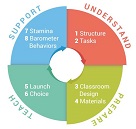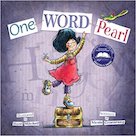Allison Behne

“Try it, you’ll like it!” is a phrase I frequently heard while growing up. My mom was an experienced cook, but I was not an ideal taste tester. While the rest of our family raved about her meals, I picked them apart or asked for a peanut butter and jelly sandwich—not because I didn’t like what was served, but because I was too stubborn to even try it. My reasoning was that I knew what I liked and what worked for me, so what was the point of trying something else?
When I went to college, my persistent and patient mom told me I was going to have to expand my palate because peanut butter and jelly was not always going to be an option.
“What will happen when you go home with a friend for the weekend and their family fixes something new?”
“What about business dinners later in life?”
“What will you eat when you go to weddings and other social events?”
“How will you cook for your family when you have children?”
They were all questions worth considering.
Slowly I began to try things. Some I didn’t care for, whereas others were a pleasant surprise that I couldn’t believe I had missed out on for years. It was not easy for me to break out of my comfort zone and try new things, but it was necessary and rewarding, and resulted in my adding new items to the limited list of foods I liked.
When we continue to experience only what is familiar to us, we close the door to endless possibilities. It is easy to do . . . even in the classroom. I found myself frozen in that spot before I started using Daily 5 in my kindergarten class.
“I’m not sure when I’ll have time to launch Daily 5 because I have a list of first-week activities I like to use every year.”
“I form my small groups according to reading level, and that seems to work fine.”
“I understand choice is part of Daily 5, but putting students in groups and rotating them around is more manageable for me.”
“If what I’m doing is working, why change?”
Those comfort thoughts were the equivalent of the comfort food of my childhood. So I expanded my teaching palate by opening the door to Daily 5 and I learned that
taking time to teach learning behaviors for Daily 5 and Math Daily 3 at the beginning of the year made our use of the time that followed more efficient and productive;
forming groups based on student need instead of level heightened engagement and accelerated student growth; and
providing choice of where to sit, what task to complete, what to write about, and what to read was motivating for students and enhanced their comfort, which led to longer stamina.
Change brought opportunity for new growth. I said no to the status quo and yes to manageable behaviors in the classroom, accelerated student learning, motivated students who were engaged in self-selected, good-fit books, and much more. Not doing Daily 5 or CAFE yet? Let me channel my mom and say, “Try it, you’ll like it.”
News from The Daily CAFE
 Essential Elements Are Here! . . .
Essential Elements Are Here! . . .
Elements of Math Daily 3
This invaluable tool will help you assess your knowledge and application of Math Daily 3, leading to thoughtful reflection and meaningful goal-setting.

Math Matters . . .
Exploring Fractions*
In this activity, students develop an understanding of fractions as numbers.
 Lit Lesson . . .
Lit Lesson . . .
One Word Pearl by Nicole Groeneweg*
This fun story can be used to teach a variety of strategies.
 Focus on Health . . .
Focus on Health . . .
Fences
When was the last time you broke through a fence?





